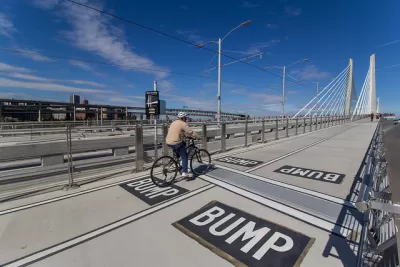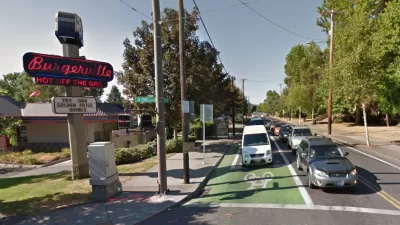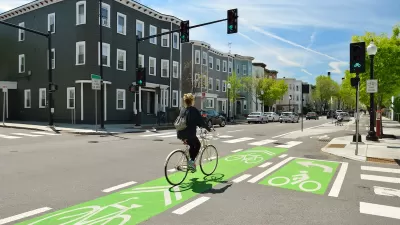The Portland Bureau of Transportation and Multnomah County agree on a 30 mph speed limit on five downtown bridges, but the state's department of transportation denied the change on two key spans.

Multnomah County and the city of Portland are "working together to reduce speed limits on several Willamette River bridges" in an effort to "reach Vision Zero safety goals and to create a more welcoming environment for non-drivers," reports Jonathan Maus. "PBOT and the County want speed limits on all five of their downtown bridges — the Broadway, Burnside, Hawthorne, Morrison and Sellwood — to not exceed 30 mph," but have not been granted permission for two key bridges from the Oregon Department of Transportation. "Now Multnomah County plans to appeal ODOT’s decision at a meeting of the state’s Speed Zone Review Panel next month."
In a letter to ODOT, the Multnomah County Bicycle and Pedestrian Advisory Committee writes that "[t]he speed limit reduction is in coordination with the PBOT Vision Zero program, which has a goal to reduce all speeds in the Central City area, including the County-owned bridges." The letter goes on, "[i]t is important for the safety of bicycle lane users to reduce the speed differential with motor vehicle traffic" on all of downtown Portland's bridges, and that "conflicts between pedestrians and motor vehicle drivers are common occurrences here. The people who use these areas deserve to have slower, safer motor vehicle traffic." Beyond making the bridge safer, the letter goes on, "speed limits should be consistent on all downtown bridges."
FULL STORY: Multnomah County and City of Portland push ODOT for lower speed limits on Hawthorne and Burnside bridges

Alabama: Trump Terminates Settlements for Black Communities Harmed By Raw Sewage
Trump deemed the landmark civil rights agreement “illegal DEI and environmental justice policy.”

Study: Maui’s Plan to Convert Vacation Rentals to Long-Term Housing Could Cause Nearly $1 Billion Economic Loss
The plan would reduce visitor accommodation by 25% resulting in 1,900 jobs lost.

Why Should We Subsidize Public Transportation?
Many public transit agencies face financial stress due to rising costs, declining fare revenue, and declining subsidies. Transit advocates must provide a strong business case for increasing public transit funding.

Paris Bike Boom Leads to Steep Drop in Air Pollution
The French city’s air quality has improved dramatically in the past 20 years, coinciding with a growth in cycling.

Why Housing Costs More to Build in California Than in Texas
Hard costs like labor and materials combined with ‘soft’ costs such as permitting make building in the San Francisco Bay Area almost three times as costly as in Texas cities.

San Diego County Sees a Rise in Urban Coyotes
San Diego County experiences a rise in urban coyotes, as sightings become prevalent throughout its urban neighbourhoods and surrounding areas.
Urban Design for Planners 1: Software Tools
This six-course series explores essential urban design concepts using open source software and equips planners with the tools they need to participate fully in the urban design process.
Planning for Universal Design
Learn the tools for implementing Universal Design in planning regulations.
Smith Gee Studio
Alamo Area Metropolitan Planning Organization
City of Santa Clarita
Institute for Housing and Urban Development Studies (IHS)
City of Grandview
Harvard GSD Executive Education
Toledo-Lucas County Plan Commissions
Salt Lake City
NYU Wagner Graduate School of Public Service





























